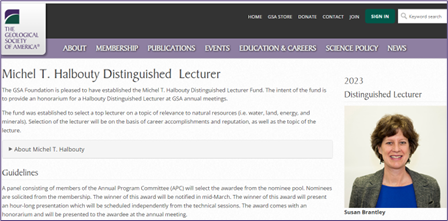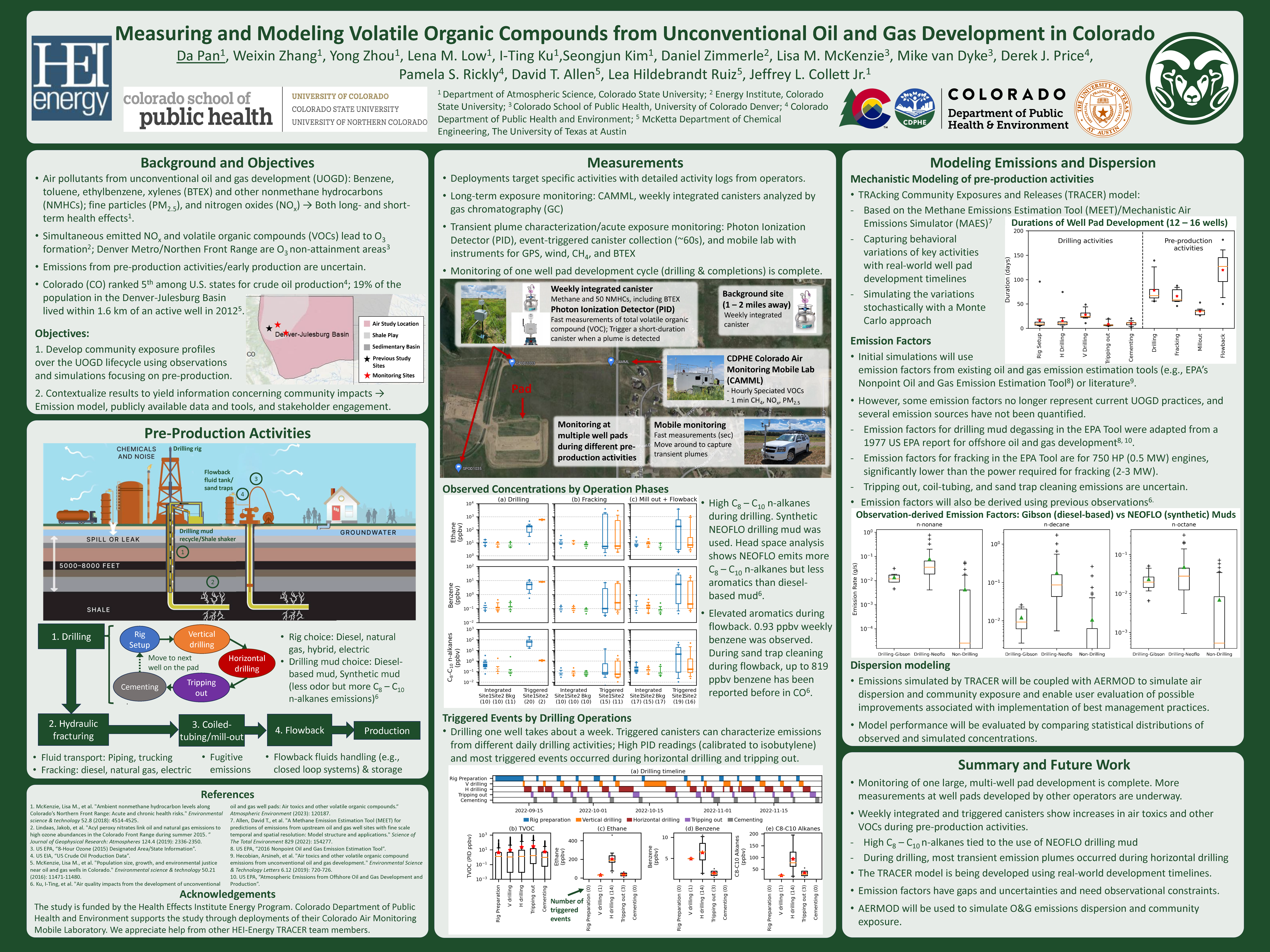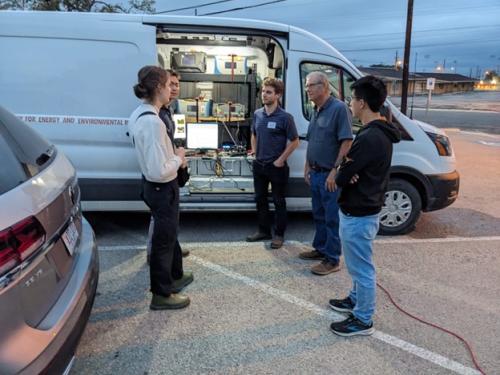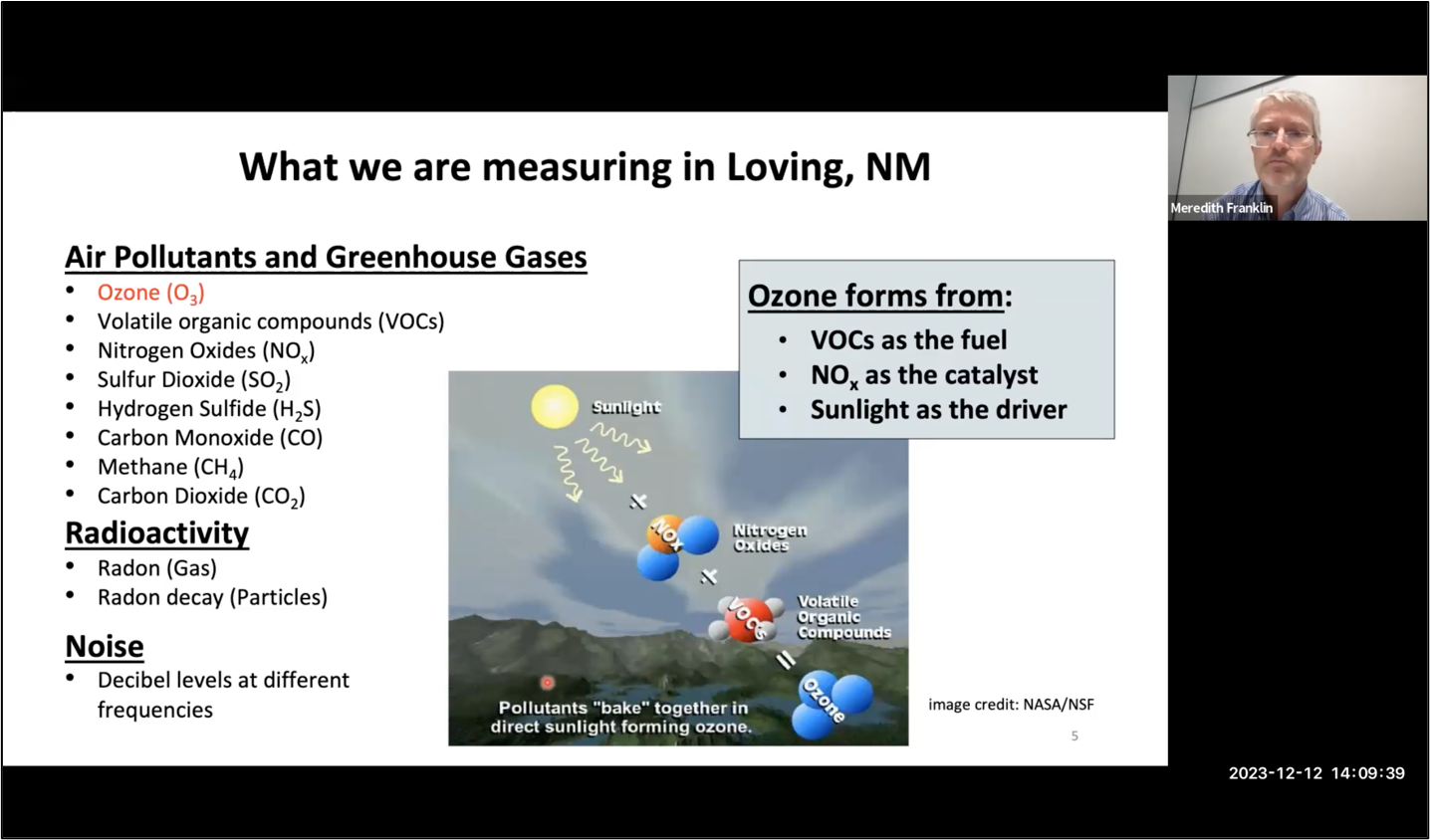Quarterly Update December 2023
HEI Energy's December 2023 Quarterly Research Updates are now available. You will find the latest progress from each of our 5 exposure studies in communities affected by oil and gas development.
Project Updates
Water Quality Research
Using Geoscientific Analysis and Community Engagement to Analyze Exposures to Potential Groundwater Contamination
Read the full Research Report here
The overall goal of this study is to evaluate potential linkages between unconventional oil and gas development (UOGD) and groundwater contamination in a tri-county region of Pennsylvania with many overlapping potential sources of contamination. The analysis will be informed by focus groups in the region to help identify areas of community concern. The team plans to produce a broadly applicable framework to study the relationship between specific UOGD processes and potential groundwater contamination. The investigators will apply the following methods to achieve their goals:
- Combine an existing data set of chemical measurements in groundwater with machine learning to isolate the influences of natural and anthropogenic processes on groundwater chemistry and to identify chemical signatures of UOGD.
- Evaluate linkages between UOGD and potential water contamination.
- Develop an approach to map locations of potential contamination from UOGD activities for application to future investigations of potential human exposures and health effects associated with UOGD.
- Collected and analyzed well water samples well water in “hot spots” identified through their analysis as likely locations of wastewater spills, in order to evaluate the team’s approach.
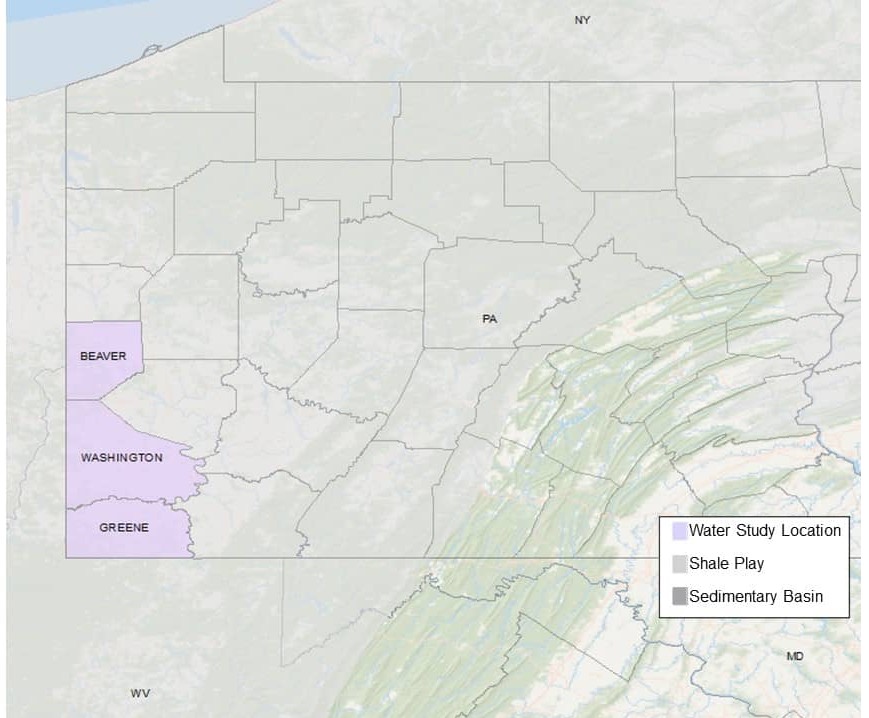
What's Happened
- The research team completed final community focus groups and model work and submitted its draft Investigator Report to HEI Energy for evaluation by HEI’s Energy Review Committee.
- The team has submitted manuscripts for publication to top geoscience and geography journals.
- Dr. Baka and Dr. Brantley spoke at the League of Women Voters of Pennsylvania’s 2023 “Shale & Public Health conference,” November 14, 2023 (https://www.shalepalwv.org/2023-shale-public-health-conference/).
- Dr. Brantley gave the Michael T. Halbouty Distinguished Lecture at the Geological Society of America Annual Conference, October 17-18, 2023. Dr. Baka and Dr. Shaheen also presented at this conference:
- Baka: “Something in The Water? Analyzing Community and Geoscientific Knowledge of the Energy-Water-Health Nexus in Southwestern Pennsylvania”
- Shaheen: “Wastewater Spills During Shale Gas Development as a Driver of Increased Groundwater Salinity”
What's New
- Research is complete and under review by HEI’s Energy Review Committee.
- Dr. Baka and Dr. Brantley will present their research as part of HEI Energy’s “Energy & Health” webinar series on December 18, 2023.
What's Next
- The team’s draft Investigator Report will undergo review by HEI’s Energy Review Committee before being finalized and posted to HEI Energy’s website along with the Committee’s Commentary on the study. The Commentary describes the strengths and limitations of the research and describes it in the context of the broader scientific literature.
Assessing the Effects of Unconventional Oil and Gas Development on Community Water Sources
The study is complete and now undergoing peer review and an independent quality assurance/quality control audit before HEI Energy releases the research report in the first part of 2026.
The goal of this study is to evaluate whether instances of community water supply contamination in Colorado and New Mexico might be the result of unconventional oil and gas development (UOGD). The study will be useful for understanding the UOGD operational conditions that might present a risk to community water supplies. The investigators will apply the following methods to achieve their goals:
- Analyze existing groundwater and surface water quality data for community water supplies near UOGD and examine correlations between water quality and oil and gas operational data.
- Examine temporal and spatial correlations between UOGD and community water supply contamination to identify possible exposure pathways.
- Model contaminant transport along possible exposure pathways to evaluate the feasibility of the pathways connecting community water supplies with UOGD.
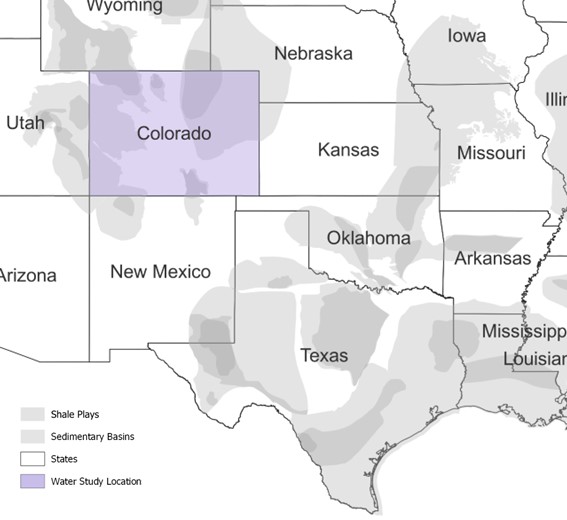
What's Happened
- Continued modeling of groundwater flow and transport to assess the feasibility of oil and gas development affecting community water supplies.
What's New
- Completing research, and Dr. Ryan’s draft Investigator Report will be due soon afterward.
What's Next
- Revise and submit manuscripts as the study wraps up.
- When received, the team’s draft Investigator Report will undergo review by HEI’s Energy Review Committee before being finalized and posted to HEI Energy’s website along with the Committee’s Commentary on the study. The Commentary describes the strengths and limitations of the research and describes it in the context of the broader scientific literature
Air Quality and Noise Research
Measuring and Modeling Air Pollution and Noise Exposure Near Unconventional Oil and Gas Development in Colorado
Read the full Research Report here
The goal of this study is to develop community exposure profiles in the Colorado North Front Range for chemicals in the air as well as noise over the UOGD lifecycle, from site preparation through production of multi-well pads. This study will assess potential exposure pathways connecting UOGD chemical emissions to nearby communities and use the results to better understand the public health implications. The investigators will apply the following methods to achieve these goals:
- Use a combination of existing air quality data, innovative air quality measurements, and source apportionment models to quantify potential exposures.
- Collect noise measurements from UOGD operations to quantify potential exposures.
- In collaboration with the Hildebrandt Ruiz team, develop the "TRAcking Community Exposures and Releases" (TRACER) model for use in the Denver-Julesburg region to predict chemical emissions from specific UOGD processes. The teams will combine the predicted emissions with an air quality model to estimate concentrations of chemicals in the air.
- Evaluate model performance by comparing air quality monitoring data collected by this and the Franklin team with model predictions in the Denver-Julesburg region.
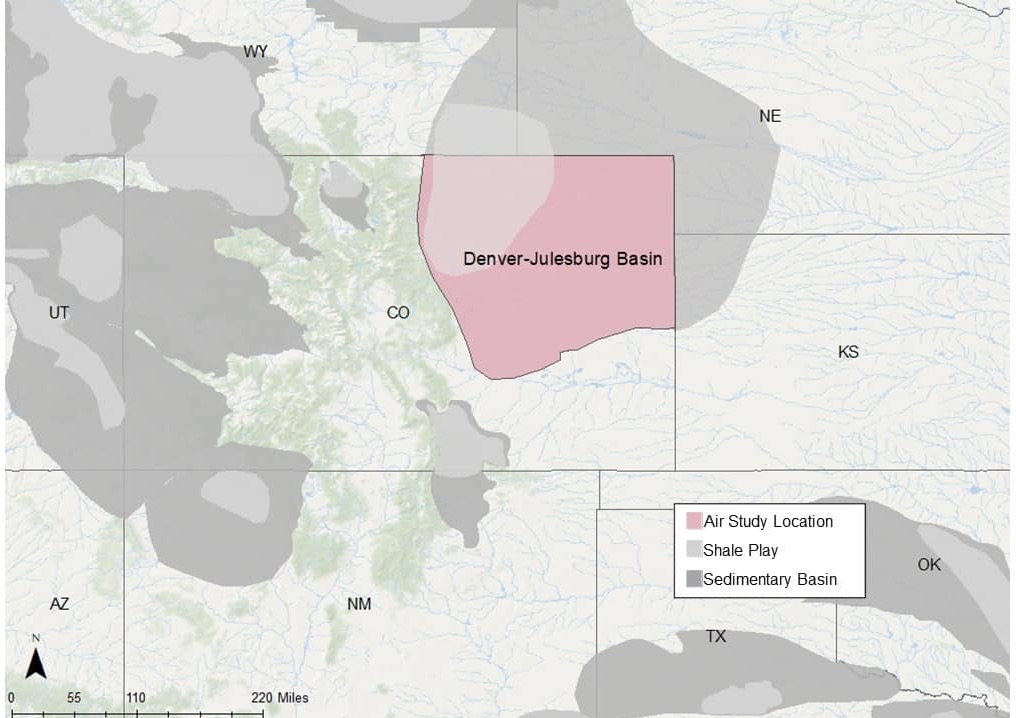
What's Happened
- Completed air and noise monitoring of drilling operations at a well pad near Brighton, Colorado.
- Nearly completed monitoring of the full lifecycle of a well pad near Aurora, Colorado.
- Collected samples of drilling fluid and drilling mud and collected air samples near drilling mud recycling operations at the well pad near Brighton.
- Designed the first version of an activity-based emissions model that includes drilling, hydraulic fracturing, and flowback operations.
- Recently published three papers concerning air quality impacts of unconventional oil and gas development in the Denver-Julesburg and Permian Basins.
Ku, I. T., Zhou, Y., Hecobian, A., Benedict, K., Buck, B., Lachenmayer, E., Bryan, T., Frazier, M., Zhang, J., Pan, D., Low, L., Sullivan, A. P., & Collett Jr, J. L. (2024). Air quality impacts from the development of unconventional oil and gas well pads: Air toxics and other volatile organic compounds. Atmospheric Environment, 120187. https://doi.org/10.1016/j.atmosenv.2023.120187
Pollack, I. B., Pan, D., Marsavin, A., Cope, E. J., Calahorrano, J. J., Naimie, L. E., Benedict, K. B., Sullivan, A. P., Zhou, Y., Sive, B. C., Prenni, A. J., Schichtel, B. A., Collett Jr., J. L., & Fischer, E. V. (2023) Observations of ozone, acyl peroxy nitrates, and their precursors during summer 2019 at Carlsbad Caverns National Park, New Mexico, Journal of the Air & Waste Management Association, 73:12, 951-968, DOI: 10.1080/10962247.2023.2271436
Pan, D., Pollack, I. B., Sive, B. C., Marsavin, A., Naimie, L. E., Benedict, K. B., Zhou, Y., Sullivan, A. P., Prenni, A. J., Cope, E. J., Calahorrano, J. J., Fischer, E. V., Schichtel, B. A., & Collett Jr, J. L. (2023) Source characterization of volatile organic compounds at Carlsbad Caverns National Park, Journal of the Air & Waste Management Association, 73:12, 914-929, DOI: 10.1080/10962247.2023.2266696
What's New
- Identifying suitable hydraulic fracturing operations for study in early 2024.
- Analyzing prior observations of well pad development in Broomfield, Colorado, using ambient volatile organic compound (VOC) concentrations and dispersion modeling to understand emissions from drilling operations that employ petroleum-based and synthetic drilling muds.
- Comparing emissions rates estimated in the team’s study to emission estimates for drilling mud volatilization from the EPA oil and gas emissions tool.
What's Next
- Begin monitoring emissions and noise from hydraulic fracturing operations at a new location near Windsor, Colorado in late 2023/early 2024.
- Continue analysis of drilling, hydraulic fracturing, and flowback emissions monitored at the well pad near Aurora, Colorado.
- Further develop the emissions model in early 2024.
- Run simulations of modeled emissions to compare with ambient air concentrations observed during well drilling and completion operations at the well pad near Aurora, Colorado, to help understand the model’s accuracy.
Upcoming Events
- CSU Research Scientist Dr. Da Pan will present an overview of initial study findings and emission model development at the American Geophysical Union Fall Meeting in San Francisco Dec. 11-15, 2023.
Predictive, Source-oriented Modeling and Measurements to Evaluate Community Exposures to Air Pollutants and Noise from Unconventional Oil and Gas Development
The goal of this study is to develop a broadly applicable model, the "TRAcking Community Exposures and Releases" (TRACER) model. The model will assess potential community exposures to chemicals in the air from UOGD and inform future health studies. The model will then be used to predict the magnitude and frequency of emissions from individual UOGD sources, and when coupled with dispersion modeling, will generate concentrations of chemicals in the air. The investigators will apply the following methods to achieve their goals:
- Collect stationary and mobile air quality and noise measurements in the Eagle Ford, Texas region.
- In collaboration with the Collett team, develop the TRACER model in the Eagle Ford region to generate chemical emissions data from specific UOGD processes. The teams will combine the predicted emissions with air quality models to estimate local and regional concentrations of chemicals in the air.
- Expansion of the TRACER model to the Marcellus region, leveraging data from the separately funded Appalachian Methane Initiative.
- Evaluate model performance by comparing air quality monitoring data with model predictions in the Eagle Ford region.
- Use TRACER model results to assess spatial and temporal variability of potential community exposures to UOGD-associated chemicals and evaluate the effects of different UOGD sources on potential community exposures.
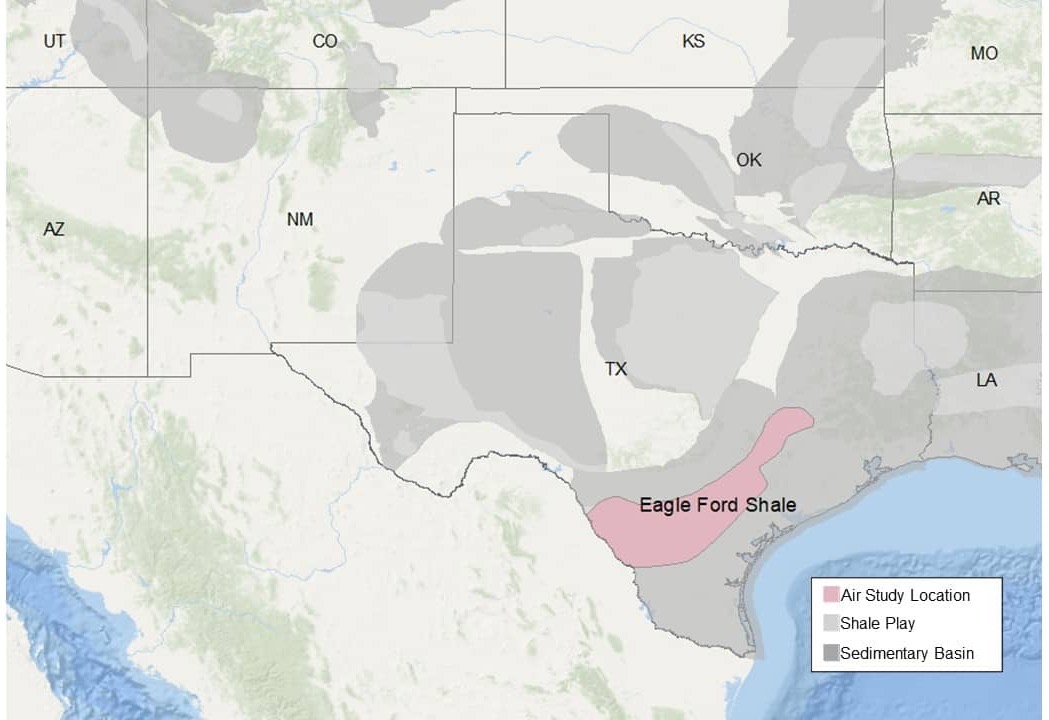
What's Happened
- Conducted the second intensive sampling campaign from Oct. 17-Nov. 16, 2023, in Karnes City, TX. Mobile sampling focused on emissions from dry gas production, a petrochemical waste facility, and flaring.
- Held a public open house in Karnes City on Nov. 9, 2023.
- Presented the study at the Energy Emissions Modeling and Data Lab’s (EEMDL) first annual meeting and at the Fall 2023 meeting of the American Geophysical Union.
- Finalized five locations for initial modeling and exposure assessment in Karnes City: the elementary school, junior high school, and high school; the correction center; and a hospital.
What's New
- Continuing to analyze monitoring data collected this year.
- Presenting our preliminary results at conferences.
- Identifying the exact locations of oil and gas sources within 20 km of the stationary monitoring site and gathering their activity data for calculating emissions.
- Collaborating with our exposure team to evaluate existing exposure assessment methods and develop alternative approaches.
What's Next
- Continue to analyze data and share preliminary results.
- Continue to gather activity data for oil operations in the Eagle Ford Shale.
- Begin emissions and dispersion modeling.
Upcoming Events
- Abstract submitted to the conference entitled “Odour Management: Embracing Global Perspectives", hosted by the Air & Waste Management Association in Toronto May 14-16, 2024. Presentation TBD.
Assessing Source Contributions to Air Quality and Noise in Unconventional Oil Shale Plays
Read the full Research Report here
The goal of this study is to understand potential community exposure to UOGD-associated chemicals and radioactivity in air as well as noise. The investigators will apply the following methods to achieve their goals:
- Monitor air quality and noise in the Permian region of New Mexico and the Eagle Ford region of Texas to understand how potential exposures vary across the regions and over different time scales.
- Combine existing air monitoring data in the Denver-Julesburg region of Colorado and original data collected in the Permian and Eagle Ford regions with statistical models to distinguish UOGD from other sources of chemicals in the air and noise sources.
- Leverage satellite data to examine the association between natural gas flaring and air quality.
Collaborate with the Collett and Hildebrandt Ruiz teams to evaluate the "TRAcking Community Exposures and Releases" (TRACER) model performance in the Denver-Julesburg and Eagle Ford regions.
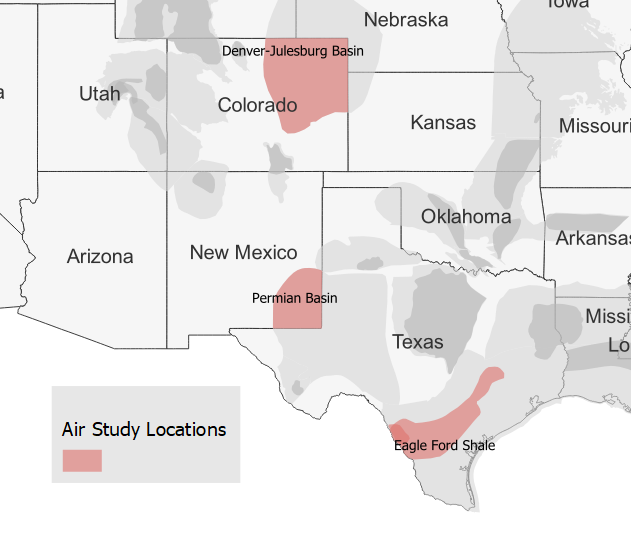
What's Happened
- Hosted a webinar on December 12, 2023, to present preliminary air quality monitoring data from our sampling campaign in Loving, NM. Link to the recording here.
- Developed two infographics (available in English and Spanish here) that explain the ozone concentrations observed in Loving, NM and flaring in the Permian Basin.
- Continued visits to the stationary monitoring site in Loving, NM, for routine maintenance, particle filter changes, and instrument checks.
- With the help of community volunteers, finalized a passive air quality monitoring network to include 9 sites around the Carlsbad-Loving-Malaga, NM area.
- Participated in a Community Open House in Karnes City, TX, with another HEI Energy-funded research team (Hildebrandt-Ruiz).
What's New
- Continuing analysis of air quality monitoring data collected at the stationary monitoring site in Loving, NM. trailer reveals high concentrations of ozone on hot, sunny days, that are driven by high concentrations of volatile organic compounds, particularly petrochemical-related alkanes, emitted in the area.
- Comparing air quality monitoring data from Loving, NM, with similar measurements in the Denver-Julesburg Basin of Colorado.
- Increasing media attention around the emissions in the Permian Basin, with news releases from the Carlsbad Current-Argus, Santa Fe New Mexican and Texas A&M.
What's Next
- Source apportionment of the stationary air quality monitoring measurements in Loving, NM, to help identify what is contributing to air quality observations.
- Targeted noise measurements will be taken in a short-term field campaign around the Loving, NM, stationary monitoring site to better understand sound profiles from various oil and gas operations in the general area.
- Lab analysis of air samples from the passive monitoring network and creation of a database of these air quality data.


